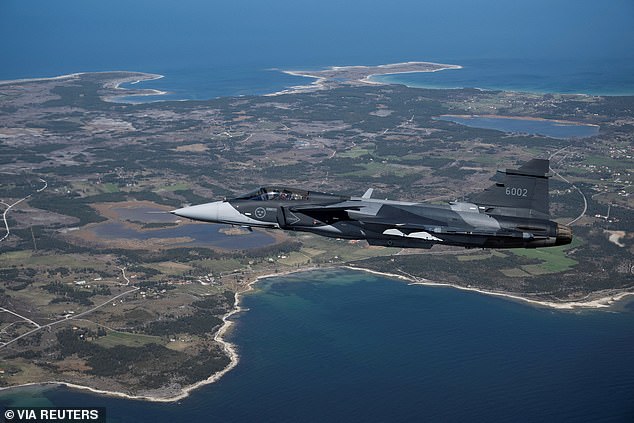Yesterday NATO fighter jets were sent to intercept a Russian reconnaissance plane that infringed Swedish airspace in the Baltic Sea.
The Ilyushin Il-20 electronic signals intelligence (ELINT) aircraft was recorded breaking into the Swedish flight information region near the island of Gotland, which is widely considered the most strategic location in the Baltic Sea.
A pair of Eurofighter Typhoon aircraft were deployed from an air base near the German town of Laage to rendezvous with the Il-20, which NATO Air Command declared was not responding to identification requests.
Codenamed ‘Coot-A’ by NATO, the Il-20 ELINT aircraft is equipped with radar and sensor suites designed to gather intelligence and help other aircraft and armed forces identify key vulnerabilities in NATO defense networks. his adversaries.
The German air force, the Luftwaffe, shared disturbing images of the fighter jets closely flanking the Russian plane.
‘A deployment of our 71st Air Force Tactical Wing warning squadron ”Richthofen” outside Laage. together with our [Swedish] partners we verify a [Russian] reconnaissance planes on Gotland,” said a message from the Luftwaffe.
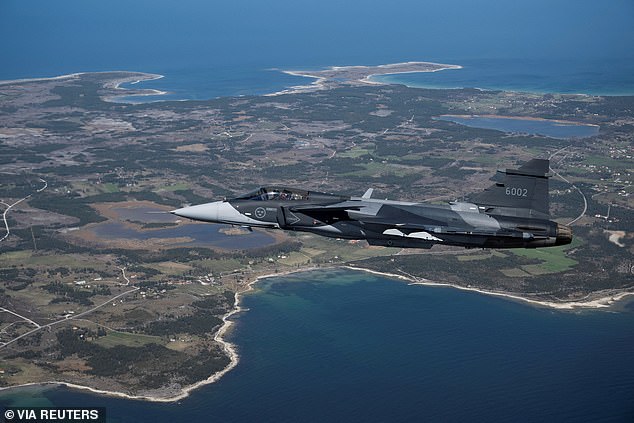
FILE PHOTO: A Swedish JAS 39 Gripen E fighter jet flies over the Swedish island of Gotland in the Baltic Sea, on May 11, 2022
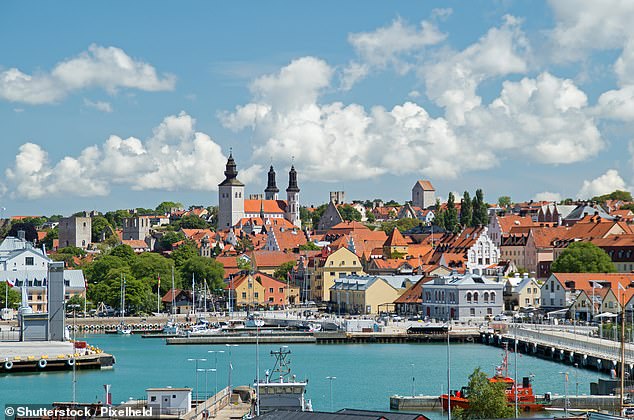

View of the city of Visby on the Swedish island of Gotland
Russia’s air force regularly conducts sorties in which its aircraft enter the flight information region (FIR) of NATO nations, without entering the airspace itself.
Unlike an unauthorized violation of a country’s airspace, which would be seen as a direct violation of its sovereignty, an FIR violation is considered a less serious, but still alarming, breach of airspace regulations.
But the flight path of the Russian spy plane near Gotland will be seen as an additional cause for concern, given the importance of the island.
Described by analysts and commentators as a “giant aircraft carrier”, Stockholm-administered Gotland lies just 120 miles off the coast of NATO’s Baltic triad of Estonia, Latvia and Lithuania, but also just 230 miles north from the Russian enclave of Kaliningrad.
Its prime location offers enormous advantages in the deployment and control of air and sea traffic in the Baltic Sea, and it has been regularly mentioned as a highly desirable target by Russian military analysts and media commentators.
Sweden maintained a military presence on Gotland during the Cold War and the island at its peak housed up to 25,000 troops, but by 2005 it was almost completely demilitarized.
But now, with Sweden’s NATO membership complete and amid rising tensions with Russia, Prime Minister Ulf Kristersson said the prospect of rearming Gotland was “an obvious thing that needed to be discussed with our new NATO allies” as part of a broader intensification of military preparation in the Baltic.
“Anything to do with the Baltic is an obvious candidate (for the deployment of military resources),” Kristersson said last month.
“This applies in terms of presence on Gotland, but also in terms of surveillance, in terms of underwater capabilities.”
Russian military analyst and retired Navy captain Vasily Dandykin told Russian news service Sputnik that a remilitarization of Gotland would be seen as a major issue in the corridors of the Kremlin.
‘The size of this island allows us to put aviation, airfields and naval bases… (to serve) the dream of both the NATO bloc and the Americans of turning the Baltic Sea into a NATO sea… We understand what “What a threat this is,” Dandykin said.
“In any case, more intensive [Russian] The exercises will take place in the Baltic. We have to understand that Finland is also already a member of NATO. Therefore, our actions will be appropriate, both from Kaliningrad, where the Baltic Fleet is based, and from the rest of Russia.’
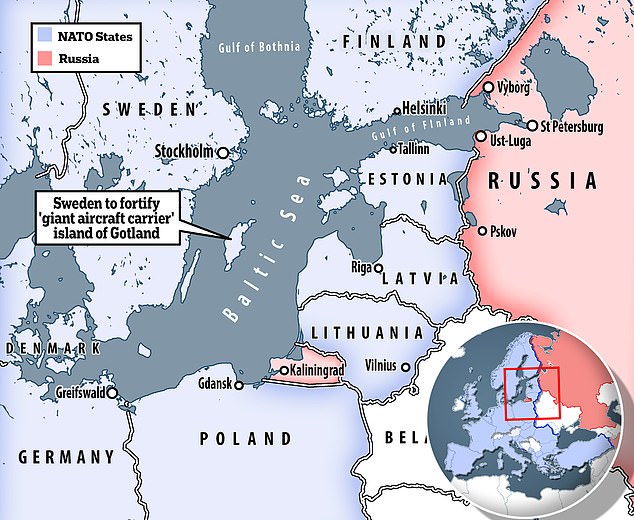

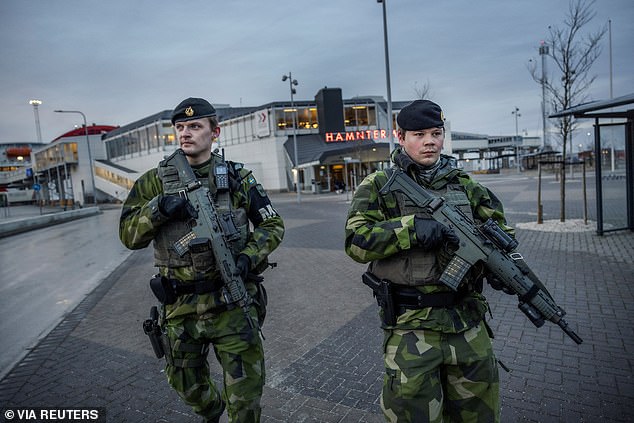

Soldiers from the Gotland Regiment patrol the port of Visby, amid rising tensions between NATO and Russia over Ukraine.
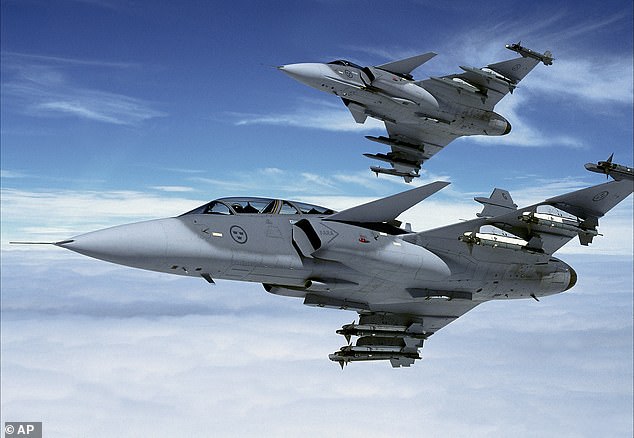

Pictured: Two Swedish Air Force JAS-39 Gripen fighter jets in close formation. Sweden will provide state-of-the-art submarines and a fleet of highly capable Gripen fighter aircraft to NATO forces.
Sweden has not gone to war in more than two centuries and until recently had reduced its military capabilities to such an extent that its population, so ill-prepared for the possibility of conflict, even developed a term for it: ‘fredsskadad’. , or ‘peace damaged’.
Sweden’s demilitarization of Gotland in 2005 caused alarm among NATO allies, particularly the Baltic states that had just become members of the alliance a year earlier.
War planners have long struggled to find a way to prevent those countries from being cut off from their allies if Russian ground troops were to seize the 40-mile Suwalki Gap between Belarus and the Russian enclave of Kaliningrad.
If the Kremlin also gained control of Gotland, it would leave Estonia, Latvia and Lithuania trapped between the Russian mainland to the east, Kaliningrad to the west and another strategic location further north.
NATO repeatedly urged Stockholm to recognize Gotland’s strategic importance, but the government pressed ahead with its demilitarization and the Swedish military effectively abandoned its “giant aircraft carrier.”
Baltic fears were justified in 2013, when Russia carried out a widely condemned military exercise in which two of Moscow’s Tu-22M3 nuclear bombers, along with an escort of Su-27 fighter jets, conducted mock bombing maneuvers that brought their wings closer to just 24 miles from the island.
This shock prompted Stockholm to re-embark on a steady rearmament program, but it was not until Russian tanks and fighter jets crossed the border into Ukraine on February 24, 2022 that the militarization of Gotland accelerated.
The invasion of Ukraine was a watershed moment in Swedish foreign policy, prompting the government to abandon its two-century-old policy of military neutrality and non-alignment and apply to join NATO.
Two years later, SwedenNorway’s flag was raised at NATO headquarters in Brussels on Monday, cementing the Nordic country’s place as the security bloc’s 32nd member.

